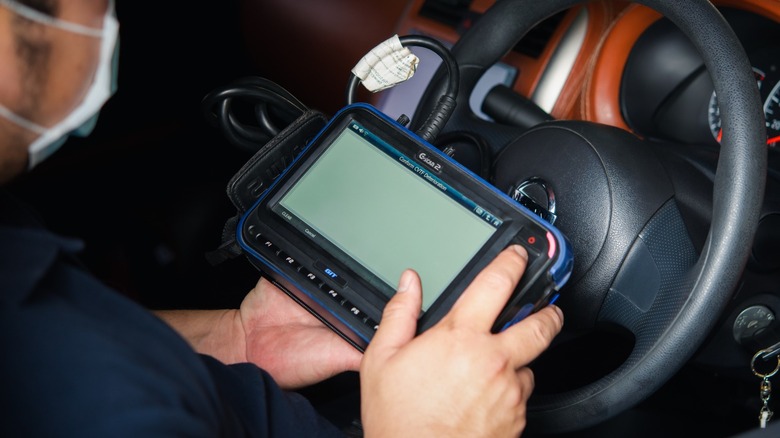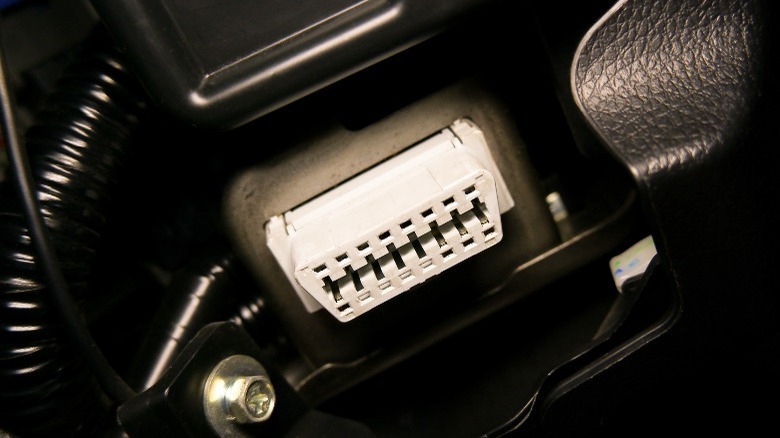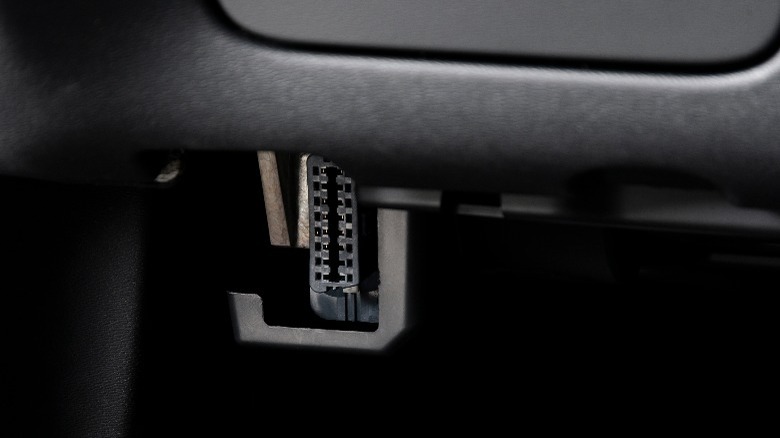
PongMoji/Shutterstock
Modern vehicles are rolling computers, with systems managed by embedded hardware and software designed to talk to the manufacturers’ diagnostic tools locally and wirelessly. While this complexity can make repairs more difficult for some home mechanics, every car sold in the United States since 1996 and in Europe since 2001 comes equipped with a connector known as an OBD-II (Onboard Diagnostics 2) port that gives the manufacturer, independent car care professionals, and the owner -– with proper equipment -– access to codes those complex systems flag to indicate an issue.
If your vehicle check engine light is illuminated, you can access the OBD-II port with a proper scanner and, odds are, it can give you a code that indicates where the issue is located. Given the important knowledge the OBD-II port can provide you or your mechanic, it is important to know where it is located in your vehicle in the event that you need to access it.
How to locate the OBD-II Port in your vehicle

BLKstudio/Shutterstock
The OBD-II port location varies between the manufacturer, make, and model of a vehicle. Below are some of the most common places to find the connector. It is recommended that when attempting to find the port that you have a flashlight with plenty of lumens nearby, as most of these areas will be poorly lit areas of your interior.
- Underneath the steering column.
- To the left or right of the steering column, closer to the dashboard.
- In the front driver-side footwell on the far left near the dead pedal or on the far right near the transmission tunnel.
- In the front passenger-side footwell beneath the glove compartment.
- Between the transmission and center console.
- Near the entertainment system or navigation controls.
These are some of the most common OBD-II port locations, but certainly not the only ones. If you have difficulty visually finding the port in one of these common placements, consult your owner’s manual for a definitive answer as to where it is located.
Why you should know the location of the OBD-II port in your vehicle

Gargantiopa/Shutterstock
As the cost of an automotive purchase has risen significantly in recent years, a vehicle is one of the largest purchases the average person makes in their life. In the unfortunate event of a problem with the rolling asset known as your car, knowing the location of the OBD-II port –- which can provide a wealth of information about the health of your vehicle –- is a smart investment of your time.
Once the port location is known, you can purchase an after-market diagnostics tool from your online or local retailers to plug into the OBD-II port, giving you access to the trouble codes from your vehicle. Knowing what these codes mean can aid you in making a better-informed decision, such as whether the issue is an easy repair or something that will require going to a mechanic or dealership to be resolved.